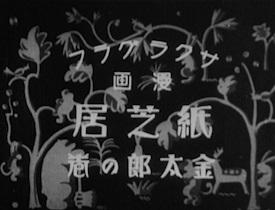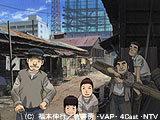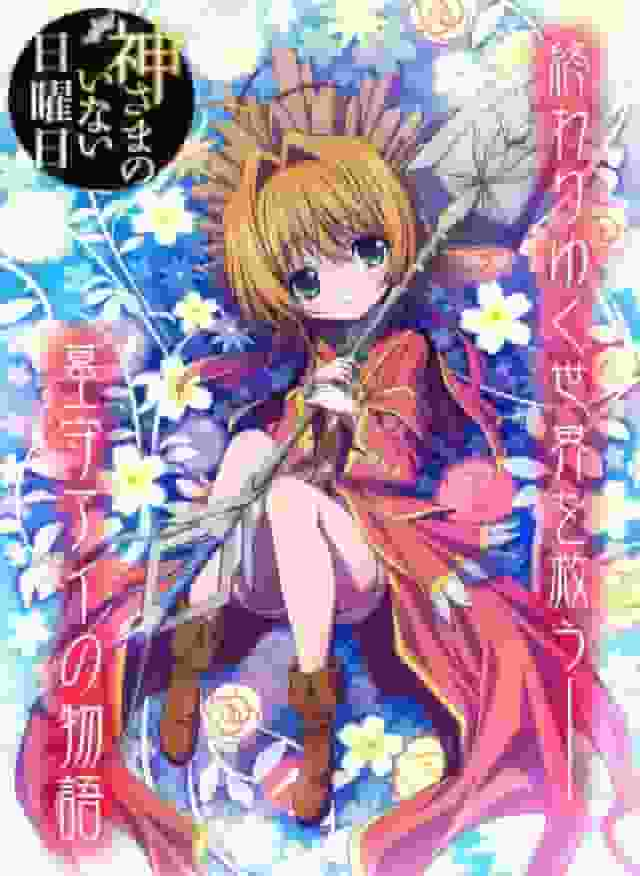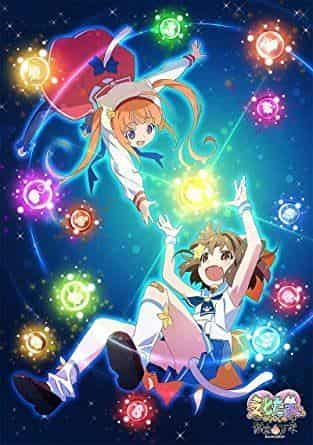A thorough review of the Kamishibai "Kintaro no Maki"! A good old Japanese story brought to the modern era

"Kamishibai Kintaro no Maki": Looking back at classic anime from the early Showa period"Kamishibai Kintaro no Maki," which has left its mark on the history of Japanese animation in the early Showa period, was released on January 1, 1934. This work was produced by Yokohama Cinema Shokai and was a pioneering work that expressed the traditional form of kamishibai as animation in a short seven minutes. Below, we will provide detailed information and reviews of this work, as well as a detailed explanation of its historical significance. OverviewAs its name suggests, "Kamishibai: Kintaro no Maki" is an animated version of the traditional Japanese storytelling style known as kamishibai. Kamishibai is a performance in which a story is told by turning over sheets of paper with pictures on them, one after the other, and was extremely popular among children in prewar Japan, especially. This work expresses the appeal of kamishibai through the new medium of animation, and it must have been a fresh experience for audiences at the time. The film tells the story of a legendary Japanese hero named Kintaro. Kintaro is known as a strong and brave boy who goes on various adventures while making friends with animals. The film uses the picture-story show format to present dynamic visuals and storytelling centered on Kintaro's exploits. Production background and staff"Kamishibai Kintaro no Maki" was produced by Yokohama Cinema Shokai. This company played an important role in the Japanese animation industry in the early Showa period, producing many pioneering works. In particular, Yasuji Murata, who was responsible for the illustrations in this work, was one of the most important artists active in the Japanese animation world at the time. His unique touch and expressiveness greatly enhance the appeal of this work. The background to the production of this work was the early Showa period, when Japan was rapidly modernizing and animation, a new medium, was beginning to attract attention. By recreating the traditional form of kamishibai (picture storytelling) as animation, it was attempted to provide viewers with a new entertainment experience. This attempt was successful, and "Kamishibai: Kintaro no Maki" was highly praised by viewers at the time. Evaluation and significance of the work"Kamishibai Kintaro no Maki" is a work that occupies an important position in the history of Japanese animation in the early Showa period. The reasons for this can be summarized as follows: Firstly, this work was highly innovative in that it was one of the first to recreate the traditional Japanese storytelling form of kamishibai as an animation, offering audiences a new entertainment experience by expressing the dynamic visuals and storytelling of kamishibai through animation. Secondly, this work depicts the story of Kintaro, a legendary Japanese hero, and also plays a role in conveying Japanese culture and history to the audience. Kintaro's bravery and strength must have had a great impact on the children of the time. In addition, the value of this work is enhanced by the fact that the story of Kintaro teaches the importance of friendship and courage. Finally, this work is an important one that contributed to the development of the Japanese animation industry in the early Showa period. With the involvement of important people in the Japanese animation world at the time, such as Yokohama Cinema Shokai and Yasuji Murata, this work had a major impact on the subsequent development of Japanese animation. In particular, the attempt to recreate the traditional format of kamishibai (picture storytelling) in animation became a catalyst for bringing out the diversity and creativity of Japanese animation thereafter. Detailed information about the workDetailed information about "Kamishibai Kintaro no Maki" is summarized below.
Recommendations and how to watch"Kamishibai: Kintaro no Maki" is highly recommended for anyone who wants to experience the charm of early Showa era Japanese animation, for anyone interested in the traditional Japanese storytelling form of kamishibai, and for anyone who wants to learn about Japanese culture and history through the story of Kintaro. This work can now be viewed on DVD and the Internet. In particular, it can be viewed on archive sites that specialize in the history of Japanese animation, and on fan sites that collect classic animation. It may also be available at libraries and university media centers, so it is another way to view it. Related works and their reviewsOther Japanese animation works produced around the same time as "Kamishibai Kintaro no Maki" include the following:
These works, like "Kamishibai Kintaro no Maki," share a commonality in that they both attempt to recreate traditional Japanese storytelling forms through animation, and in that they also play a role in conveying Japanese culture and history, providing viewers with deep emotions and learning experiences. The historical significance of the work and its subsequent influence"Kamishibai Kintaro no Maki" is a work that occupies an important position in the history of Japanese animation in the early Showa period, and had a major impact on the development of Japanese animation thereafter. In particular, the attempt to recreate the traditional Japanese storytelling form of kamishibai through animation served as a catalyst for bringing out the diversity and creativity of Japanese animation thereafter. This work also portrayed the story of Kintaro, a legendary Japanese hero, and played a role in conveying Japanese culture and history to the audience. Kintaro's bravery and strength must have had a great impact on the children of the time. The value of this work is also enhanced by the fact that the story of Kintaro teaches the importance of friendship and courage. Furthermore, this work is an important piece that contributed to the development of the Japanese animation industry in the early Showa period. With the involvement of important people in the Japanese animation world at the time, such as Yokohama Cinema Shokai and Yasuji Murata, this work had a major impact on the subsequent development of Japanese animation. In particular, the attempt to recreate the traditional format of kamishibai (picture storytelling) in animation became a catalyst for bringing out the diversity and creativity of Japanese animation thereafter. Viewing experience and impressions of the workMy impression of watching "Kamishibai Kintaro no Maki" is that the visuals are beautiful and dynamic. The visuals, which make use of the kamishibai format, have the power to draw the viewer into the world of the story. The story, which depicts Kintaro's bravery and strength, also moves and inspires the viewer. The most memorable scene was when Kintaro makes friends with animals and goes on various adventures. This scene depicts the importance of friendship and courage, and deeply touches the viewers. Another attraction of this work is that we were able to learn about Japanese culture and history through the story of Kintaro. Overall, Kamishibai: Kintaro is a wonderful experience of the charm of early Showa era Japanese animation, allowing viewers to rediscover the charm of kamishibai, a traditional Japanese storytelling form, and learn about Japanese culture and history through the story of Kintaro, leaving viewers deeply moved and educated. Recommendations and viewing methods (reposted)"Kamishibai: Kintaro no Maki" is highly recommended for anyone who wants to experience the charm of early Showa era Japanese animation, for anyone interested in the traditional Japanese storytelling form of kamishibai, and for anyone who wants to learn about Japanese culture and history through the story of Kintaro. This work can now be viewed on DVD and the Internet. In particular, it can be viewed on archive sites that specialize in the history of Japanese animation, and on fan sites that collect classic animation. It may also be available at libraries and university media centers, so it is another way to view it. Conclusion"Kamishibai: Kintaro no Maki" occupies an important place in the history of Japanese animation in the early Showa period and had a major impact on the development of Japanese animation thereafter. As a pioneering work that recreated the traditional Japanese storytelling form of kamishibai in animation, and depicting the story of Kintaro, a legendary Japanese hero, it also played a role in conveying Japanese culture and history to viewers. In addition, with the involvement of important people in the Japanese animation world at the time, such as Yokohama Cinema Shokai and Yasuji Murata, this work had a major impact on the development of Japanese animation thereafter. Not only can viewers rediscover the charm of Kamishibai, but they can also learn about Japanese culture and history through the story of Kintaro. The story also depicts the importance of friendship and courage, providing viewers with deep emotions and learning experiences. Please watch this work and experience the charm of Japanese animation from the early Showa period. |
Recommend
Reassessing the appeal and emotion of Rascal the Raccoon: A deep look into the classic anime
Rascal the Raccoon - Rascal the Raccoon overview ...
The new art and characters of the spin-off series of the classic masterpiece "Kinnikuman" are released and will be broadcast on October 8
The new spin-off drama "Kinnikuman THE LOST ...
It is revealed that the new version of "Chinese Paladin 1" web drama is adapted from the original game rather than the old TV series
The new version of "The Legend of Sword and ...
New cast of "Monster No. 8" animation revealed: Sugita Tomokazu confirmed to star
The TV animation of "Monster No. 8" bas...
Netflix's fantasy drama "Deadly Key" confirms that the third season will end
According to foreign media reports, Netflix annou...
It is said that "Sekiro" and "Ghost of Tsushima" will promote the creation of Japanese studios
"Sekiro" was released in 2019 and was a...
Hanakero: Princess Ciel of the Rainbow Kingdom - A fascinating story and in-depth character analysis
Princess Ciel of the Rainbow Kingdom - The Fascin...
The appeal and reviews of "Dragon Age": Exploring the depths of the fantasy world
"Dragon Age": A grand story that transc...
"Masked Rider BlackSun" releases new trailer Black Sun vs Shadow Moon
The special drama "Kamen Rider BlackSun"...
The famous zombie manga "According to the Six Survivors" is confirmed to be produced as a Japanese drama and will be broadcast on August 9
Based on the work by Kazune Yamamoto, the famous ...
The movie version of the campus romance manga "Senior is a Boy" was released on Valentine's Day 2025
The campus romance comic "My Senior is a Boy...
"Doraemon: Stand by Me 2" is scheduled to be released in China on May 28th. Nobita and Shizuka are married.
Today (April 14), the 3D CG animated film "D...
The Expendables 4: The Final Chapter will be released nationwide on September 15
Tao Piaopiao announced today (September 1) that T...
"86 Non-Existent Region" Chapter 2 preview trailer scheduled to premiere in October
The second chapter of the TV animation "The ...
"One Piece: The Red-Haired Diva" is a big hit, and Toei's box office has set a new record in its 71st year
The new animated film "One Piece: The Red-Ha...









